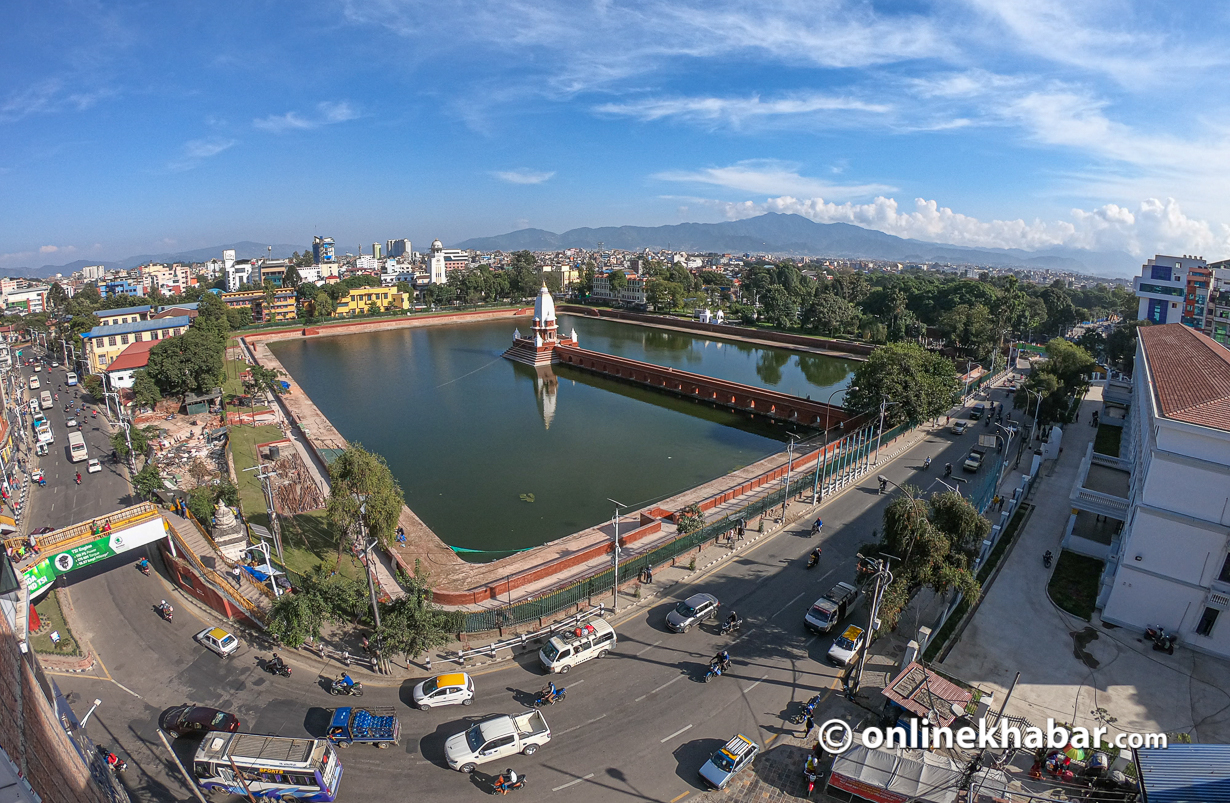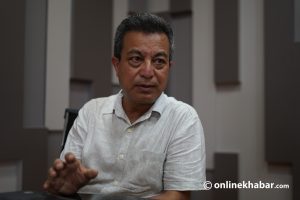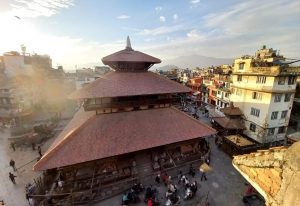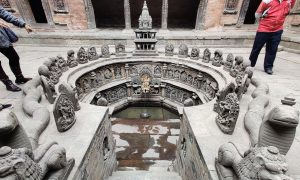The Nepal Electricity Authority recently pledged that it would unearth a hiti that remains buried in its premises. The news has started the debate once again on the existence of four hitis around Ranipokhari and whether and how they can be reinstated.
So where are these four hitis around Ranipokhari?
The four hitis are situated near the four corners of Ranipokhari. They are:
1. Nhera hiti at Ratnapark Subway
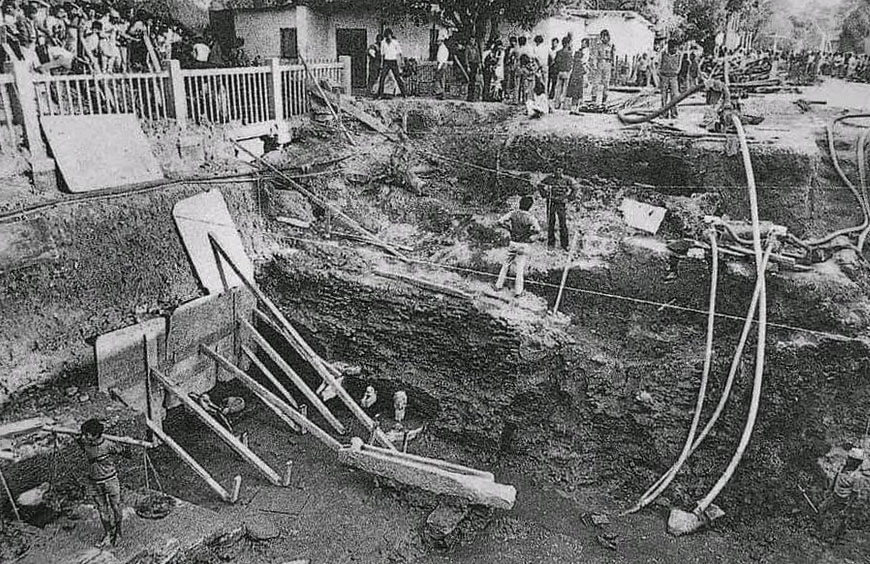
This hiti has been much debated already. In 1984, when the construction began at Ratnapark for a subway system, this buried hiti was found. It is also commonly known as Nhera hiti (or seven-spout water system).
During the excavation, they found the spouts and also an inscription from 596 CE that documented that the system was constructed by Bibhu Varman when Amshuvarma was ruling the city. Despite the discovery, the construction plan continued by keeping the excavated spouts today at National Museum in Chhauni.
A few of the discovered outlets are still visible today for any pedestrian using the subway.
2. Unnamed hiti at NEA premises
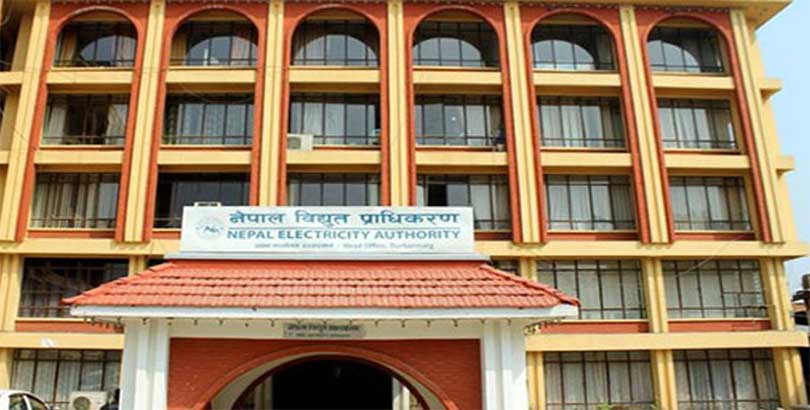
This is the hiti popular in talks today. It has been assumed that the buried system must have five spouts. Yet to find any documentation, this has not been named yet.
But many individuals have attested that there was a hiti at the premises of Nepal Electricity Authority (NEA headquarters) in the southeast corner of the pond and that it was used by the dhobi (a local term for those who washed clothes) community. After many pleas, the NEA has now agreed to unearth the hiti back to its glory.
3. Swora hiti at Durbarmarg

This other water system situated at Durbarmarg is aligned to the northeast corner of the pond. It is known as Swora hiti or Tin Dhara, named after the existing three spouts. There was also a popular school named after it – Tindhara Pathshala. The system is said to be 1300-1400 years old, built during the Lichhavi period. An inscription has been found on the premises too.
After much effort, activists have reinstated this hiti recently. They unearthed the buried water system in the coordination of the Department of Archaeology. This remains the only water system in operation today that also has a reinstated natural water flow from its resource.
4. Jhanga hiti at Jamal
This fourth hiti has been named Jhanga hiti and is said to have one spout. It is situated in Jamal, near the northwest corner of Ranipokhari.
Among the four hitis around Ranipokhari, this one has a rather disputed hiti because of the involvement of a political leader. However, many accounts have stated that there was indeed a hiti that has been buried beneath a building. This building was first erected for the RCT Club, a local football team. Today, the building runs multiple shops.
Importance of the hitis around Ranipokhari

Yadav Lal Kayastha, a key person behind the reinstating of the Swora hiti, is strongly in favour of reinstating all the four hitis around Ranipokhari. He says, “The four hitis were closely related to Ranipokhari. Firstly, the locations of the four hitis have to mean that they were a part of the same ecosystem. So if we have prioritised the Ranipokhari reconstruction, we have to now prioritise these four hitis around Ranipokhari too.”
“Secondly and more importantly, these four hitis are unique architectural and historical artefacts and our identity that we need to preserve.”
He further argues the four hitis around Ranipokhari are important also because they seem to be a part of one wholesome picture. “When we build the hiti system, we build it in odd numbers. Since we already know that the one in Jamal had one spout; seven under the subway system; and three in Tindhara. It can be assumed that there are five spouts in the one at the NEA premises (the arithmetic series).”
“If so, they would prove to be a part of an integrated system and the numbers also indicate there are meanings behind them. The proximity of the locations of four hitis around Ranipokhari also suggests there must be more significance too.”
Historian Hari Ram Joshi also agrees the four hitis were an integral part of Ranipokhari. While Kayastha says the hitis could have been the outlet of the Ranipokhari, Joshi clarifies that the hitis around Ranipokhari were in fact the sources that filled the pond, which was built to make water resources more accessible to the residents.
“Given the topographical locations, it has been said that the hitis were the source for the historic Ranipokhari. We can find the mention in the found inscription. However, we do not know the source of the four hitis for sure,” he adds, stating that the importance of the hitis remain the same though.

“There is also proof that Ranipokhari was built before Pratap Malla. He only beautified it and gave it a name. And, the four hitis around Ranipokhari were built before him as well. Two have been dated back to the Lichhavi era, adding more historical significance to the four hitis,” says Joshi.
Roshan Kazi Tuladhar, the secretary of the Ranipokhari Reconstruction User Committee, adds there is no outlet in the corners that are mentioned in the Ranipokhari sketch, which suggests that it supplied water to the hitis. “But, there is one outlet in the second tier of the pond and there is said to be an outlet near the southwest corner.”
The roadblock
But, now, because the NEA is unearthing the hiti in its premises, Kayastha is adamant that the authorities should make efforts to unearth and reinstate the hitis around Ranipokhari back to their original forms.
“The subway was and is unnecessary because we have alternative routes to use. The building (covering the Jhanga hiti) can also be reconstructed somewhere else. Our heritage should not be encroached upon because it serves the interest of the few.”
But, he is open to relocating the two remaining hitis around Ranipokhari.“ In a few cases, there have been instances where people have relocated the hiti system. But, the main thing is that they need to be reinstated as it was, as much as possible, with water flowing from its natural resources.”
Kayastha is continuing his pursuit to approach the authorities regarding ways to reinstate the hitis to their past glory with the appeal to the museums to return the broken spouts and the idols found on the premises.



